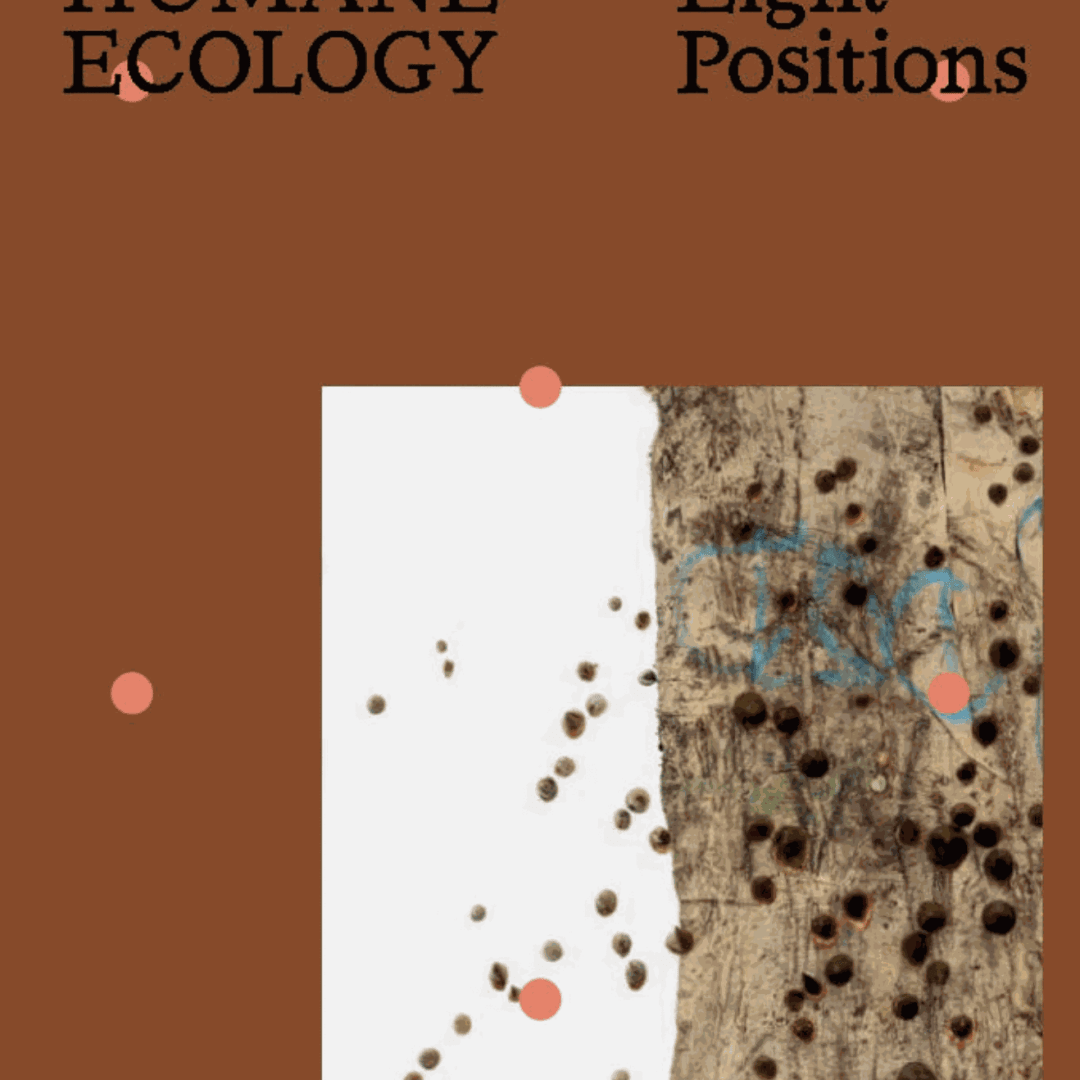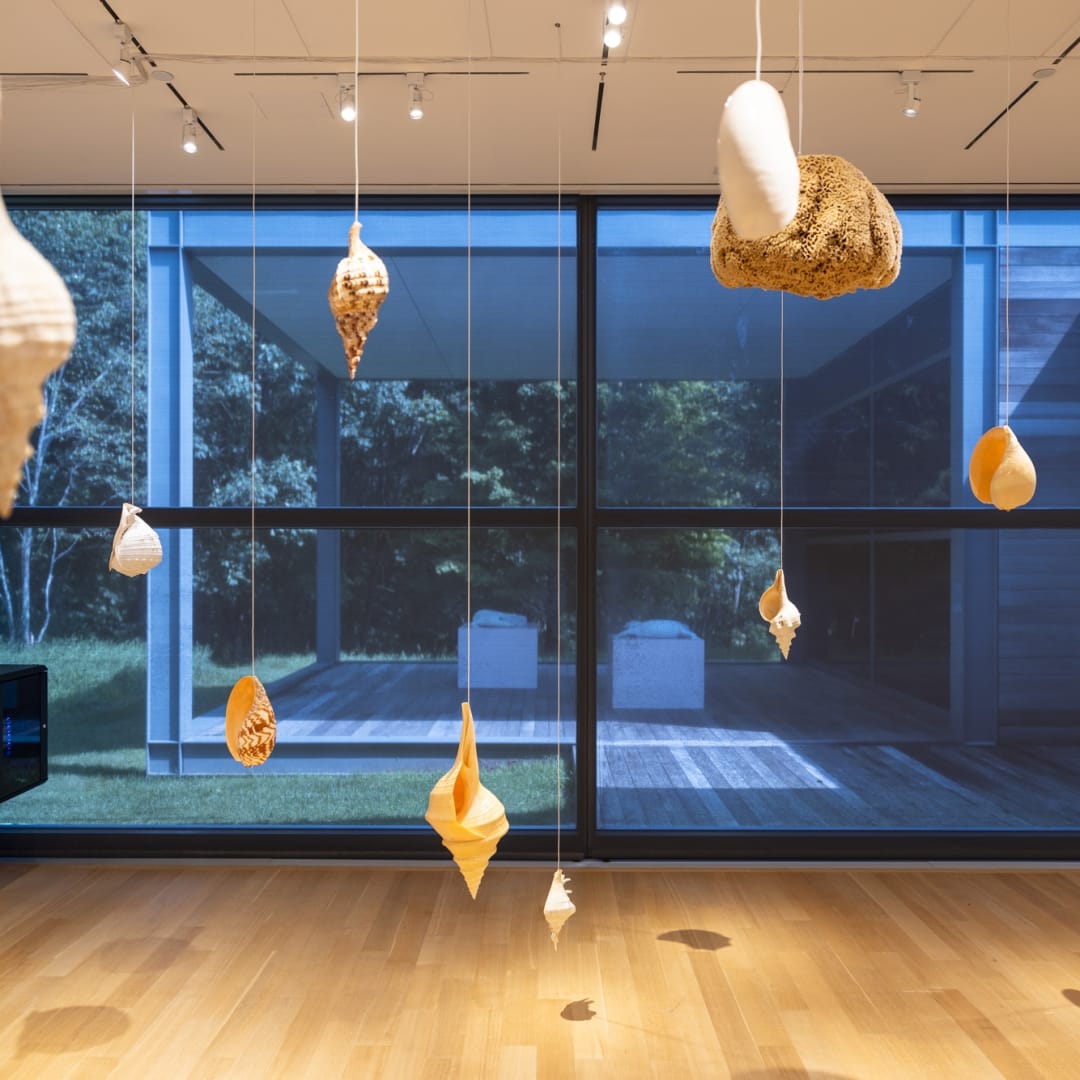HUMANE ECOLOGY: EIGHT POSITIONS
group show
July 15 - October 29, 2023
Exhibition presents new and existing work by Eddie Rodolfo Aparicio, Korakrit Arunanondchai, Carolina Caycedo, Allison Janae Hamilton, Juan Antonio Olivares, Christine Howard Sandoval, Pallavi Sen, and Kandis Williams
Humane Ecology: Eight Positions, opening July 15, 2023 at the Clark Art Institute, features a group of eight contemporary artists who consider the intertwined natural and social dimensions of ecological relationships. The exhibition, which includes sculpture, sound installation, video, and plantings, is presented in indoor and outdoor spaces at the Clark, including both the Clark Center and Lunder Center at Stone Hill. Humane Ecology is on view through October 29, 2023.
“This exhibition reconsiders nature as we know it,” said Olivier Meslay, Hardymon Director of the Clark. “Visitors to the Clark understand that our pastoral setting plays a part in so much of what we do. This ambitiously scaled exhibition features young artists whose work inspires us to think more carefully about our environment, and that of others around the world.”
Each artist included in Humane Ecology represents a distinct approach and place, or “position,” and the complex dynamics between living things and their environments is essential to their thinking. Through their work, these artists illuminate patterns of cultivation and care, migration and adaptation, extraction and exploitation that span historical, geographical, and species lines.
“Discussions of ‘nature’ often make assumptions about what it looks like and who it’s for,” said Robert Wiesenberger, curator of contemporary projects. “The artists in this exhibition challenge ideas of nature as something separate from humans and they center humans who have often been marginalized in thinking about the environment.”
About the artists
The eight artists invited to participate in Humane Ecology were asked to contribute existing work and/or commissioned to create new artworks reflective of the ecological and environmental considerations that are central to their practice.
Eddie Rodolfo Aparicio (b. 1990, Los Angeles; lives and works in Los Angeles) creates casts that capture trees’ textures, markings, and surface layers by painting latex rubber onto their trunks. Ficus trees were brought to Los Angeles in the mid-twentieth century to shade streets with their wide canopies; these trees arrived around the same time, and in many of the same places, as Central American migrant workers. The artist, whose family is from El Salvador, is struck by these twinned histories of plants and people who have “lived and grown together,” but also the unintended consequences in each case: the trees’ roots broke up sidewalks, causing them to be cut down, and the workers were also deemed a problem and eventually deported en masse. New hanging and wall-mounted works by Rodolfo Aparicio appear in the Lunder Center at Stone Hill as part of the exhibition.
Korakrit Arunanondchai (b. 1986, Bangkok; lives and works in New York and Bangkok) uses cyclical passages to structure Songs for Dying (2021), a video dedicated to the artist’s grandfather, who raised him and who is recorded here passing from one life to the next. Songs for Dying combines elements of traditional Buddhist animism—the belief in the spiritual essence of people, places, and things—with contemporary ecology and geopolitics. The video is set in Thailand and Korea, in lush forests and in dense cities, and in the mystical space of shamans, who mediate between humans and the more-than-human world. Arunanondchai’s video, by turns tender and intense, speculates on the persistence of memory and the relationship between all living things. The video is presented in the Lunder Center at Stone Hill.
Carolina Caycedo’s (b. 1978, London; lives and works in Los Angeles) site-specific, multi-part installation Power to Nurture (2023) includes murals, tapestries, and signs, indoors and out, dedicated to what the artist describes as “the feminine and feminist labor of care at the center of environmentalism.” Caycedo, who rejects the landscape genre for suggesting a window onto the land, and thus a separation from it, instead prefers portraiture—of both plants and people, and in particular those who cultivate and defend the land. The portraits on view are derived from the artist’s engaged, place-based research, which she terms “spiritual fieldwork,” and include an homage to Ella Besaw, an herbalist of the Mohican people, on whose ancestral land the Clark now stands. Several elements of the installation were produced in collaboration with students in the Williams College Art Department. Caycedo’s works are on view in the Conforti Pavilion and on the adjoining Fernández Terrace.
Alison Janae Hamilton (b. 1984, Lexington, Kentucky; raised in Florida; lives and works in New York) often includes symbols of the American South in her work. Frozen in the act of consuming themselves, Hamilton’s twin alligator sculptures mimic the ouroboros—an ancient symbol of a serpent locked in an endless cycle of death and rebirth. The artist plays on the alligator’s multiple associations: as predator and prey, as mythological figures, and as reminders of racialized violence. The incongruous setting of these animals on the Spencer Terrace outside the Lunder Center galleries, set against a mountainous landscape, suggests a long voyage, as if they are climate migrants from a rapidly warming south. Environmental crises travel, the artist suggests, well beyond the southern Black communities that have long borne the brunt of them.
Juan Antonio Olivares (b. 1988, Bayamón, Puerto Rico; lives and works in New York), in his twenty-four-channel sound installation, Fermi Paradox III, refers to physicist Enrico Fermi’s provocation that while there are billions of stars in the universe, some of which likely have Earth-like planets, humanity has yet to encounter intelligent extraterrestrial life. Twenty-one seashells and sponges hang galaxy-like in the Lunder Center gallery and are embedded with micro-speakers that play recordings from an eclectic range of sources. Olivares, who studied philosophy and art, includes existential musings from philosopher Arthur Schopenhauer, physicist Stephen Hawking, and singer-songwriter Nina Simone, among others. The human search for meaning and kinship emerges from these hushed and fragmentary tones.
Christine Howard Sandoval (b. 1975, Anaheim, California; member of the Chalon Indian Nation; lives and works in Vancouver) uses water and fire, elements that have defined the ecology of her California homeland in dramatic ways, to create a new series of drawings. Sandoval mixes water and plant fiber to create a pulp in which she embeds the stalks or seeds of bear grass, a material used in Native American basket weaving. She then selectively masks the paper and scorches it to create an image in soot that alludes to the controlled burns that Native peoples of California have long used in their stewardship of the land. These patterns also evoke the geometry of a major dam built in Central California, represented in a photograph nearby in the Lunder Center gallery. The violence of this imposition on the earth and water is suggested by the poem reproduced beside it.
Pallavi Sen (b. 1989, Bombay; lives and works in Williamstown, Massachusetts, and New York) has created a garden at the entrance to the Lunder Center at Stone Hill. Sen is interested in the aesthetics of designing gardens, the labor of caring for them, and the slow and multisensory process of engaging with them. This one, titled Experimental Greens: Trellis Composition, is dotted with decorative and practical embellishments by the artist in wood, glass, and clay, whether to enhance the visitor experience or to monitor environmental factors like rainfall. Sen has planted several vegetable variants that she knows from her childhood in India, not just for nostalgia, but also for their heat and drought resistance—a useful trait given the changing climate of the northeast United States. The garden will be tended to by the artist and Williams College students; the vegetables harvested will go to a local foodbank and the seeds will be saved and redistributed.
Kandis Williams (b. 1985, Baltimore; lives and works in New York) uses her collages of human posture and affect, and her plant sculptures teeming with people, to study various forms of dance as appropriations of Black culture. The artist assembles performers past and present in collages on paper and annotates them with lines—of embodied geometry, of force and flight, and of descent across geographic and cultural boundaries. In artificial plant sculptures, Williams adds images of models and sex workers to these representations of the Black body in motion, a “commodity fetishized,” in the artist’s words. With this work, the artist considers culture in ecological terms, and the ways in which sentient bodies migrate, perform, and adapt, often under great pressure. Her works are presented in the Lunder Center at Stone Hill.
Publication
This exhibition is accompanied by a 192-page illustrated catalogue of the same name published by the Clark and distributed by Yale University Press. This publication features entries on each artist, a curatorial text, and essays by scholars Alena J. Williams (University of California, San Diego) and Risa Puleo (School of the Art Institute of Chicago) on environmental art and histories of the northern Berkshire region in particular.
For further information, please visit the website:





